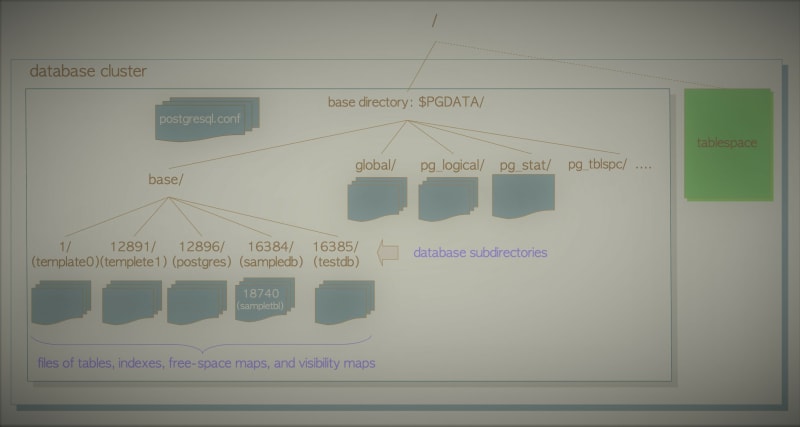PostgreSQL, a broadly adopted open-source relational database administration system (RDBMS), gives strong capabilities and is favored by quite a few people and organizations globally. When beginning with PostgreSQL, it’s essential to know the conceptual and bodily composition of a PostgreSQL database cluster.
Logical Construction of Database Cluster
In PostgreSQL, a database cluster refers to a gaggle of databases which can be overseen by a PostgreSQL server working on a single host. A database, inside this context, encompasses varied database objects like tables, indexes, views, sequences, and capabilities. It is price noting that databases in PostgreSQL are thought of as database objects themselves and are logically segregated from each other. The remainder of the database objects are related to their respective databases and are internally organized utilizing object identifiers (OIDs).
The relationships between database objects and their corresponding OIDs are saved in particular system catalogs, which fluctuate relying on the kind of object. For example, the OIDs of databases are saved within the “pg_database” catalog, whereas the OIDs of heap tables are saved within the “pg_class” catalog. To retrieve the specified OIDs, you may make the most of SQL queries to question the suitable catalogs.
Bodily Construction of Database Cluster
Whenever you initialize a brand new PostgreSQL database cluster utilizing the initdb utility, it creates a base listing. This base listing serves as the inspiration for the cluster and encompasses a number of subdirectories and quite a few recordsdata. Every database throughout the cluster is represented by a subdirectory throughout the base listing. Moreover, each desk and index related to a database is saved as at the very least one file throughout the respective subdirectory of that database.
In PostgreSQL, there’s additionally assist for tablespaces, that are directories that maintain information exterior of the bottom listing. Tablespaces are a singular characteristic particular to PostgreSQL and differ from tablespaces in different relational database administration methods (RDBMS). These tablespaces supply flexibility in storing information in areas separate from the bottom listing.
For a clearer understanding of the PostgreSQL database cluster construction, please consult with the connected snapshot.
Format of a Database Cluster
The structure of the PostgreSQL database cluster is described within the official documentation. Most important recordsdata and subdirectories are listed underneath the bottom listing, together with pg_xlog, pg_wal, pg_twophase, and pg_multixact.
Format of Databases
A database is a subdirectory underneath the bottom listing, and the database listing names are similar to the respective OIDs. For instance, when the OID of the database sampledb is 16384, its subdirectory title is 16384.
Format of Recordsdata Related to Tables and Indexes
Tables and indexes in PostgreSQL, so long as their measurement is lower than 1GB, are saved as single recordsdata underneath the database listing to which they belong. These recordsdata are managed internally utilizing particular person Object IDs (OIDs). Then again, the precise information recordsdata are managed by a variable referred to as “relfilenode.” On the whole, the relfilenode values of tables and indexes correspond to their respective OIDs, establishing a primary matching relationship between them.
The Inside Format of a Heap Desk File
Information recordsdata in PostgreSQL, which embrace heap tables, indexes, in addition to the free house map and visibility map, are divided into fixed-length pages or blocks. The default web page measurement in PostgreSQL is 8 KB. Every web page is assigned a singular block quantity, ranging from 0 and rising sequentially.
When an information file turns into full, PostgreSQL appends a brand new empty web page to the tip of the file to accommodate extra information and improve its measurement.
The inner construction of a web page inside a desk consists of three essential parts: heap tuples, line pointers, and header information. Heap tuples symbolize the precise report information and are saved in a sequential order from the underside of the web page. Line pointers, that are 4 bytes in size, function pointers to every heap tuple. They kind a easy array, appearing as an index to the tuples. Every line pointer is assigned a singular offset quantity, ranging from 1, to reference its corresponding tuple. When a brand new tuple is added to the web page, a brand new line pointer is appended to the array to level to the newly added tuple.
This web page structure permits for environment friendly storage and retrieval of information inside a PostgreSQL information file.




